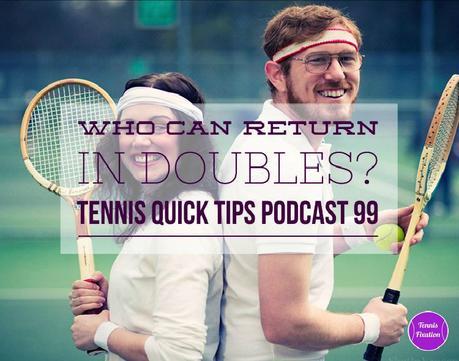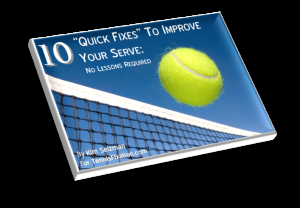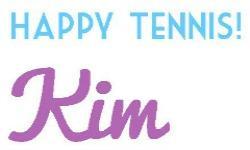Podcast: Play in new window | Download
It's time for another tennis rules episode (hooray!). This week, I'm answering the question of a Tennis Fixation follower who asks about where doubles partners can stand when returning the ball. This is a pretty interesting episode as it turns out the answer is not just about what the rules allow, but also what the best court positioning may be for the returning doubles team. You can listen to this episode by clicking on the media player above or by listening in with your favorite podcast app. You can also subscribe in iTunes by clicking on this link: tennisfixation.com/itunes.

SHOW NOTES:
I recently got an interesting email from Curt asking me this rules question:
I have been told that until the first point in a doubles match is played, either team member may return a serve regardless of where they are standing. The reasoning is that the order of play has yet to be established. True?
This is a great question because it not only raises some rules issues, it also brings up the whole topic of the best court positions for the returning team in a doubles match.
Which Partner Receives in Doubles?
The rule that applies here is ITF Rule 15, "Order of Receiving in Doubles." That rule states:
The team which is due to receive in the first game of a set shall decide which player shall receive the first point in the game. Similarly, before the second game starts, their opponents shall decide which player shall receive the first point of that game. The player who was the receiver's partner for the first point of the game shall receive the second point and this rotation shall continue until the end of the game and the set."
So that's something we already know - the returning team decides which team member will receive for the first point and then the other partner returns the second point and the order of return continues back and forth like that throughout the entire set.
Can Both Partners Position Themselves to Receive?
But, if we look further at Rule 15, specifically at USTA Comment 15.1, we find this interesting comment:
On the first point of a set, may a doubles team position both players on the deuce side of the court? Yes, but the spirit of the rule requires that the server know which member of the receiving team is going to receive the first point of a set.
So, while both members of the returning team can be positioned in the traditional spot for returning that first serve - at the baseline in the deuce court - you have to let the server know which of the two is going to return the ball so there doesn't seem to be any reason for the returning team to set up like that. In fact, having both partners in that position, back at the baseline with half of the court open and uncovered, seems like an incredibly weak position to be in. It would be a much stronger, much more offensive position to have the partners in the traditional doubles return positions, with the returner back at the baseline in the deuce court and his or her partner at the service line in the ad court. This puts the returner's partner in a great position to move in quickly and poach if at all possible.
Don't Get Hit by the Serve or Else . . .
While we're talking about the court positions of the returning team, you should also be aware of Rule 24, called "Player Loses Point." This rule explains lots of scenarios involving the serve and return and tells you who wins or loses the point. A number of "cases" are set out to give examples of how the rule applies. Case 7 states "A ball that has just been served hits the receiver or in doubles the receiver's partner before it touches the ground. Which player wins the point?" And the decision states "The server wins the point, unless it is a service let." I bring this up just as a warning - when you're positioning yourself as the returner or the returner's partner, just be sure you don't accidentally let the serve hit you before it bounces or else you lose the point. And that's true no matter how obvious it is that the serve was headed way out.
RESOURCES AND LINKS FROM THIS EPISODE:
Here are a few Tennis Quick Tips episodes you may want to listen to for more information on returning:
SHARE, SUBSCRIBE AND REVIEW:
Thanks so much for being a listener and friend of the Tennis Quick Tips podcast. And I hope you'll consider sharing this podcast with your friends and leaving a review of the show as it really helps it to be found by other like-minded tennis players. You can listen in, subscribe or leave a review by going to:
GET A BETTER SERVE FAST!
And if you're interested in getting a better serve - fast! - get my free ebook, 10 Quick Fixes to Improve Your Serve: No Lessons Required.
By applying the 10 simple tips to your serve that I give in this ebook, your serve can become a tool that you can use to gain control of points. It can become more powerful, more accurate, and something you're actually proud of. Just enter your email below and you'll get instant access to this free ebook as well as weekly updates with all of my best tennis tips!

© Kim Selzman 2015 All Rights Reserved

